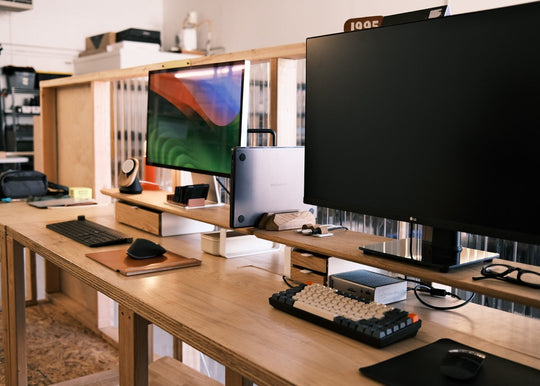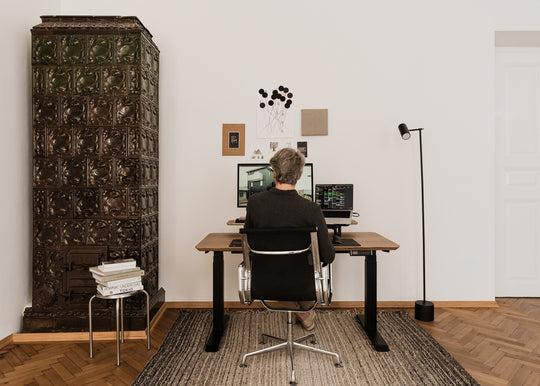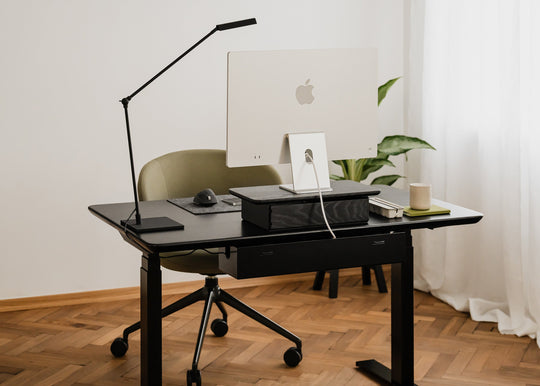
The present and the future of remote work
Although remote work existed way before 2020, it cannot be denied that the pandemic and subsequent lockdowns contributed greatly to its popularization and change of its perception. At the beginning, it may have seemed to be an emergency measure, a short-term solution to the problem at hand. However, many people do not see themselves coming back into physical offices. Is work from home really such an enticing option?

What does WFH mean?
Work from home, telework, remote work – each of these terms refers to work performed outside of the company building, which is why they are often used interchangeably. There are, however, some subtle differences between them. ‘Remote work’ highlights the freedom of choice regarding our place of work (anywhere outside of the office), whereas ‘telework’ is defined by the tools we use to perform our work tasks. Hybrid work models which involve spending a portion of our time at the office, and a portion of it someplace else, for example at home, are also under the remote work umbrella.

Photo by Major Tom Agency on Unsplash
Pros and cons of remote work
We have previously mentioned the many advantages of working from home in our home office organization article. Some of them are extra time in the absence of commute, increased flexibility and freedom over our work schedule, lower stress levels, and the ability to customize our work setup to fit our individual needs: you can get yourself a more comfortable, ergonomic desk or equip your home office with some useful and beautiful accessories.
Working at home can also improve concentration – there’s far less distractions than in the office. This is an ideal work model for introverted and neurodivergent people who struggle with spending most of their day amongst a lot of colleagues. Social fatigue can make focusing difficult and can affect productivity.
From the employer’s point of view, WFH can reduce the costs of running a business – even when employees are only partly working from home, less space is needed as the traditional office workspaces can be replaced by ‘hot desks’. Additionally, companies that offer the ability to work remotely, reported less employee turnover.
Despite its many advantages, working from home still poses some challenges. It may make maintaining a work-life balance and separating the personal and professional spheres more difficult. It can also increase the amount of time we spend ‘at work’. Isolation and lack of co-worker interaction may also negatively influence some people which is why regular group integration in real-life spaces plays a big role in maintaining high employee satisfaction.

Photo by Conor Sexton on Unsplash
Should you stay or should you go (back to the office)
A 2016 analysis conducted by the TUC (Trade Union Congress) indicated that the number of people working remotely in the UK increased by 19% within the last decade. The biggest growth happened amongst women: remote work in 2015 was chosen by 35% more female employees than in 2005.
The biggest factor in popularizing WFH, however, was the pandemic. Having experienced the benefits of working remotely, more and more employees who have previously only worked in stationary offices don’t see themselves ever coming back to their workplace desks or cubicles.
A survey conducted by Slack in late 2020 amongst 9000 employees and across 6 countries showed that almost 3/4 of participants prefer the hybrid model and only about 1/10 favor an entirely stationary work model. Similar results were gathered by a PwC survey from the same year: nearly 3/4 of workers indicated they wanted to work from home at least 2 days a week (post-lockdown restrictions), and almost 1/3 stated they wanted to remain working remotely.
More recent studies have shown that, despite the pandemic coming to an end (hopefully for good!), working from home remains a popular option. According to Owl Labs, even as much as 16% of companies in the world are entirely remote, and 62% of workers between the ages of 22 and 65 declare they want to work remotely at least partly. Furthermore, Buffer's analysis provides some interesting findings which claim 99% of people show interest in working in a hybrid model for the duration of their careers.
The Polish job market also shows a move from stationary work towards fully remote or hybrid models. The job search platform Pracuj.pl’s 2022 findings show 86% of the surveyed who are currently working in a hybrid fashion wants to remain in the same position (27% of them choose a completely remote option), and 54% of those looking for jobs prefer companies offering a choice of work style. Only 14% look forward to working completely onsite.
Upwork predicts that by 2028, 73% of all teams will be remote workers. Greater flexibility regarding time management and the freedom in choosing not only the place of work but also of residence will probably only encourage more people to join the WFH movement. Who knows, maybe the future is fully remote, and onsite offices will become relics of the past.








